IRB Profiles
-
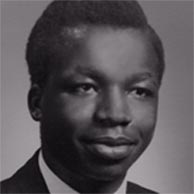
Nabwangu, James F.
Son of Africa, pioneering neurosurgeon
Nabwangu,
James F.

Nabwangu, James F.
Son of Africa, pioneering neurosurgeon
When he was a freshman in college, James Nabwangu read an article in Life magazine about how difficult it was to gain entry to the Johns Hopkins School of Medicine. Nabwangu didn’t know at the time that the school had never accepted a student of African descent. He simply viewed attending Johns Hopkins as another potential challenge in his life.
He had already overcome the challenge of moving from a rural village in West Kenya to attend college in Indiana. And he had already proved wrong a college counselor who told him that despite his outstanding high school academic record, he was not well-suited for a career in medicine or the sciences.
Nabwangu did, indeed, contradict the naysayers, and in 1967 became one of the first two blacks—and the first African—to graduate from the Johns Hopkins School of Medicine. Although he could not get a haircut or eat in restaurants around the school, Nabwangu enjoyed his time at Hopkins. He found that many of his classmates did not know what to think about his African heritage. He , also found that the university supported him when a Kenyan ambassador attempted to prevent his study of neurosurgery because of Kenya’s need for generalists not specialists.
After Johns Hopkins, Nabwangu moved to Canada for postgraduate studies at the prestigious Montreal Neurological Institute. A fellow of the Royal College of Surgeons of Canada and a diplomate of the American Board of Neurological Surgeons, Nabwangu currently practices neurosurgery in Rapid City, South Dakota.
-
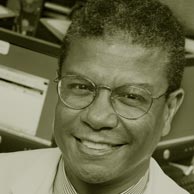
Nichols, David G.
Medical school reformer
Nichols,
David G.

Nichols, David G.
Medical school reformer
David G. Nichols was literally born into education – on the campus of the Hampton Institute in Virginia. He then moved to Germany at age 7 when his father, an English professor and Fulbright Scholar, accepted a position at Freie University. Nichols knew even at that young age that he wanted a career in medicine. As life would have it, his career has focused on both medicine and education.
In 1969, the social changes taking place in the United States drew Nichols back from Germany. He went to Yale University and Mt. Sinai Medical School and began looking for faculty positions. He initially left Johns Hopkins off of his list of possibilities because he had heard it was unfriendly. But on a visit to Baltimore he found that Johns Hopkins was “the most vibrant, the most exciting, the most stimulating… and most welcoming place.”
Nichols joined the faculty at Johns Hopkins in 1984 and in 2000, he was named vice dean for education at the School of Medicine. In this role he oversees undergraduate, graduate, residency, postdoctoral, and continuing medical education programs, and the Welch Medical Library. His initiatives include increasing the use of technology in teaching medicine, reforming the school’s curriculum, launching a collaboration to build an academic medical center in Malaysia, supporting the recognition of education in tenure and promotion guidelines, overseeing the design of a new $50 million Armstrong medical education building and enhancing diversity.
In addition to his administrative post, Nichols is the Mary Wallace Stanton Professor of Education and a professor of anesthesiology and critical care medicine. He has been the editor-in-chief of leading textbooks in pediatric critical care medicine and has edited Rogers Textbook of Pediatric Intensive Care and Critical Heart Disease in Infants and Children.
-
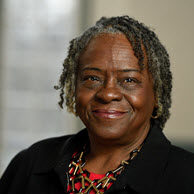
Norris, Lynnise V.
Valiant Financial Facilitator
Norris,
Lynnise V.

Norris, Lynnise V.
Valiant Financial Facilitator
Lynnise Norris is not one to shy away from difficult conversations. An accounting supervisor in the university’s finance division, she relishes her job tracking all of the government funding the university takes in for research and education. When she’s not crunching numbers, Norris is thinking up ways to help improve the plight of her fellow Blue Jays. For that, her colleagues and fellow members of the Black Faculty and Student Association (BFSA) are grateful.
For two decades, Norris has been a guiding force and staunch supporter of people of color who study, teach, and work at the Johns Hopkins University. Elected in 2017 to serve a two-year term as president of BFSA, she has made countless contributions to the black experience at Johns Hopkins as well as to that of others from different ethnic, cultural and religious backgrounds. She’s made these contributions at the risk of the alienation that can sometimes come with sticking one’s neck out to shine a light on inequities and challenges in the workplace. “I’m not one to stand in the background and let things be,” she says. “If you care about people, you try to make a difference, and I care about people.” Norris, who earned a bachelor of science degree in accounting from the University of Baltimore, a master’s degree in science marketing from JHU’s Carey Business School, and a post-graduate certificate from the Carey School, is a lifelong Baltimore resident. She and her fellow BFSA members have worked with senior leaders to improve the university’s climate. “A lot of people just leave rather than stay and fight for what they want or need. It’s hard for people to stand up. They’re afraid they will be blackballed and won’t move up in their careers. I get it, it’s hard, Norris said. “I would love to stand in the background, but that’s not me.”
Norris’ dedication to advocacy at Johns Hopkins resulted in the implementation of the Finance Diversity Mentor Program, a 10-month initiative designed to connect employees in finance roles throughout the university with senior leaders who serve as mentors. The program, which ended in April, sought to expose emerging finance professionals to various opportunities in finance. “I wanted a way for people of color, especially young black men, to see a path forward in finance,” said Norris. “When you come in my department you don’t see black men.”
-
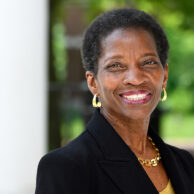
Norton, Anita
Collaborator and Advocate - 2024 Inductee
Norton,
Anita

Norton, Anita
Collaborator and Advocate - 2024 Inductee
For Anita Norton, becoming an honoree in The Indispensable Role of Blacks exhibit at Johns Hopkins is a full-circle moment: The project is one she helped shape more than a decade ago, as part of her advocacy with the Black Faculty and Staff Association (BFSA).
“I’m humbled by it,” says Norton, who retired in 2023 as director of the Online Services Program in the Sheridan Libraries’ Entrepreneurial Library Program. “It’s a distinguished award, and I recognize the caliber of people honored.”
When Norton first joined Johns Hopkins in 2005 as a distance learning librarian, she noticed a scarcity of Black employees in professional roles. She found her way to the BFSA, becoming a core part of what she describes as “a small, lively group of movers and shakers who had an interest in ensuring the campus was equitable for all, and who were willing to stick their necks out.”
Over time Norton took on a variety of leadership roles within the BFSA, including Homewood caucus representative, recording secretary, and parliamentarian. In her early years she steered the group’s African American Book Festival and collaborated on many other events.
With colleague Sharon Morris, Norton helped organize a traveling exhibit called The History of African Americans at Johns Hopkins, acknowledging Black trailblazers of the university’s past and present. “The idea came about because the BFSA saw that when people came to Johns Hopkins campuses and looked at photos or portraits on the wall, almost none displayed African Americans,” Norton says.
Eventually, Norton and Morris saw a need to increase the exhibit’s visibility and scope, re-envisioning it as The Indispensable Role of Blacks. The project debuted in 2012 as both a free-standing and online exhibit, honoring notable Black alumni, faculty, staff, and students from Hopkins.
Growing up in Queens, New York, Norton had witnessed the effects of discrimination from an early age. When her father opened a business in a majority-white part of Long Island, its entrance was splattered with the letters KKK. “I saw the impact of lack of tolerance,” she says. “So, I’ve always wanted to do things that would break down barriers and promote greater tolerance of our differences.”
Norton attended Morgan State University, then earned her master’s in library and information science at the University of Pittsburgh. She worked in library services for Baltimore City Schools and at Harford Community College before joining Johns Hopkins, where she worked for 18 years.
In 2010, Norton became manager of the Entrepreneurial Online Library Program, overseeing an external library whose long-term contract generated revenue for the Sheridan Libraries. “I encountered educators and students from many cultures, and it was important that my staff maintained a high level of tolerance and excellence,” says Norton, who relied on her innate enthusiasm and collaborative skills.
In this role, she established the Exploring Series, a set of workshops for librarians diving into trends in the field. She also took part in the Diversity Committee at the Sheridan Libraries, and in 2018 co-curated the exhibit Freedom Papers: Black Assertions from the Archives.
In June 2024, Norton takes her place among the honorees she has celebrated through The Indispensable Role of Blacks, a group now numbering over 90.
“It feels wonderful to receive my roses,” she says.
-
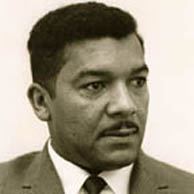
Owens, Ronald C.
Facilitator of Success
Owens,
Ronald C.

Owens, Ronald C.
Facilitator of Success
Ronald C. Owens was only at Johns Hopkins University for four years, but in that time he did a lifetime of good. As an admissions officer for Hopkins from 1969 to 1973, Owens traveled the East Coast recruiting young African American men and women who could succeed at Hopkins. Using a strict methodology, Owens along with his fellow admissions officers, would meet with prospective students to ascertain their goals and quality of their character. He reviewed the curriculum at their high schools to determine if they were prepared to take on the rigor of a Johns Hopkins education. There weren’t many black students on the Homewood campus at the time, and Owens was pleased to have a role in diversifying the university’s student body. “I like to think that we opened the door for a number of African American students who came through Johns Hopkins,” he said. “We were able to bring them here where they could work to succeed. We were facilitators of success.”
Owens was employed at Hopkins at a time of great change. The university went co-ed while he was there and the complexion of the campus started to change. In his admissions role, he had a hand recruiting a number of African American students to the school. Owens is reluctant to take sole credit for his work. It was a collective effort among all the admissions officers, as well as the administration, faculty, staff and the students themselves, he said.
While his work focused on students of color, Owens’s approachable style made him a favorite among students of every hue, as was evident when white students on campus asked him to be the coach of their G.E. College Bowl team, the national radio and TV quiz show that aired in the 1950s and 1960s.
Owens was an early achiever. In 1952, he was awarded a Ford Foundation Scholarship to Morehouse College where, at age 16, he enrolled for two years. He earned his undergraduate degree at Arkansas AM&N. In 1959, he was drafted into the U.S. Army, and later honorably discharged.
Now retired, Owens is as proud of his time at Hopkins as he is about the career he built for himself after he left the university. While working full time at Hopkins, Owens attended the University of Baltimore Law School where he was named Notes & Comments Editor of the University of Baltimore Law Review, making him the first African American to hold the position.
After obtaining his degree, he joined the Baltimore City State’s Attorney’s office as a prosecutor. He then became assistant city solicitor before serving as legislative assistant to former Maryland Gov. Harry Hughes. Around this time, he returned to Hopkins to serve as a pre-law advisor to upperclassmen considering careers in the legal field. In 1980, Owens was appointed associate general counsel of ACTION, a federal volunteer program. He retired in 1994 as associate general counsel for the Peace Corps.
Owens was the first African Americans to serve in many of the positions he held. He’s proud of the distinction, but is hesitant to dwell on it. “It’s not important that someone is the first at what he does,” he says. “It’s what a person does with that first that matters.”
-
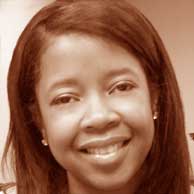
Paul, Nicklaine
Compassionate pain reliever, health care advocate
Paul,
Nicklaine

Paul, Nicklaine
Compassionate pain reliever, health care advocate
Diseases rise and fall from public attention. Sickle cell, for example, is no longer in the forefront of the news, but the excruciating bouts of pain it causes are at the center of the lives of 100,000 Americans, most of them African American, and their families. In 2008, the leadership at Johns Hopkins opened the Sickle Cell Infusion Center to address the needs of adults living with sickle cell disease. That same year Nicklaine Paul moved from Connecticut to Baltimore, joined the center’s staff and began making a positive difference in the lives of its patients and workers.
As the lead clinical nurse at the Sickle Cell Infusion Clinic, Paul is known for her depth of compassion and empathy and for her dedication to ensuring that the center is both efficient and patient-centered.
With Paul as a team leader, Johns Hopkins Sickle Cell Infusion Center has decreased hospital
admissions and readmissions for adults living with sickle cell disease. Paul presented the center’s successes at a national meeting of the Sickle Cell Disease Association of America, and her presentation generated interest from other centers throughout the country that would like to create similar models of care. The nursing care policies and protocols Paul developed for treating sickle cell patients in acute pain are now used as a model for other similar clinics at Johns Hopkins and in other institutions throughout the United States.
Beyond policies and protocols, Paul models for other staff the kind of attention and support patients seek. Many patients at the Sickle Cell Infusion Center have said that Paul is the first nurse who truly understood their disease and was able to make them feel safe and comfortable in the midst of a pain crisis.
-
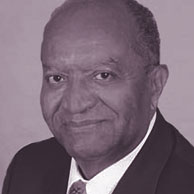
Pierre, Percy A.
Diversity engineer
Pierre,
Percy A.

Pierre, Percy A.
Diversity engineer
As a student at the University of Notre Dame, Percy A. Pierre helped integrate restaurants in South Bend, Indiana. As a higher education administrator, he continues to ensure better integration of the engineering field.
Since becoming the first black student to earn a doctorate in electrical engineering at Johns Hopkins University in 1967, Pierre has built an illustrious career. In addition to being highly regarded for his research in signal processing, he has served in a wide range of government and higher education administrative posts, including White House fellow, dean of the College of Engineering at Howard University, assistant secretary and acting secretary of the Army, president of Prairie View A&M University and vice president of research and graduate studies at Michigan State University.
As a professor of electrical and computer engineering at Michigan State, Pierre created and directs the Sloan Engineering Program. This initiative recruits, mentors and helps fund domestic engineering doctoral students, with a focus on underrepresented groups.
Pierre is particularly well-known as the architect of a successful national effort to increase the number of minorities in engineering. He works with the National Academy of Engineering and the Alfred P. Sloan Foundation, which awards grants to support original research and education in science, technology, engineering, mathematics and economics.
-
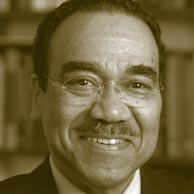
Roulhac, Edgar E.
University growth leader
Roulhac,
Edgar E.

Roulhac, Edgar E.
University growth leader
For more than 30 years, Ed Roulhac lent his expertise to the growth of Johns Hopkins. He joined the university in 1978 as the first assistant dean for students and continuing education at the School of Public Health, from which he holds a Master of Public Health degree. In 1986, he moved to the provost’s office, where he guided and directed expansion of the university’s Washington, D.C. Center and was the founding director of the Johns Hopkins Montgomery County Campus. From 1993 until his retirement in 2011, Roulhac served as the university’s vice provost for academic services, with broad academic planning oversight and stewardship for advancement of JHU’s academic programs and key health professional service centers and institutes. In addition, he managed several university-community partnerships, including the Johns Hopkins Urban Health Initiative and K-12 education outreach programming.
Lloyd B. Minor, provost and senior vice president for academic affairs at Johns Hopkins, said of Roulhac, “His accomplishments during nearly 34 years of service are staggering, yet each has the imprint of his integrity, impeccable standards and unwavering commitment to the mission of The Johns Hopkins University.”
-
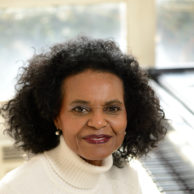
Rowe, Devonna
An Operatic Artist for All Ages
Rowe,
Devonna

Rowe, Devonna
An Operatic Artist for All Ages
Devonna Rowe has traveled the world as an opera singer and arts educator, bringing her voice to theaters and opera houses in such places as Europe, Africa and Asia. A classically trained singer with an extensive range, her operatic roles include the Countess in Mozart’s “The Marriage of Figaro,” Clara in Gershwin’s “Porgy and Bess,” and La Zia Principessa in Puccini’s “Suor Angelica.”
However, it’s her role as voice instructor to students of all ages at Johns Hopkins Peabody Preparatory that Rowe counts among her proudest roles. “At Peabody, it’s about working with people at all levels to help them not only develop their vocal skills but their musical skills as well.” It’s also about giving back in recognition of those who were instrumental in her development as an artist and music educator.
A native of Wilson, N.C., Rowe grew up singing in church where she sang her first solo at the age of 3. During high school, she studied and performed in Los Angeles, California. She went on to receive an undergraduate degree in music education and a masters and doctorate in vocal performance. Along the way, Rowe received a music fellowship from opera singer Leontyne Price and began a teaching career that would span more than three decades and include stints at the University of North Carolina at Chapel Hill, Aspen Music School, Vanderbilt University, and Morgan State University.
Rowe cites her former students who have earned graduate degrees in voice from Yale University, the Julliard School of Music and New York University as success stories. These students have gone on to professional careers performing with the Washington Opera, the Opera Theatre of Saint Louis as well as Off Broadway.
Rowe’s career extends beyond teaching voice. In addition to being on Peabody Prep’s faculty for the past 13 years, she is a member of the Black Faculty and Staff Association. A specialist in Integrated Arts Education, she works in Baltimore and throughout Maryland with students in grades K-12 teaching youngsters about African American history through language arts, music, dance and improvisation.
Working as a consultant for the John F. Kennedy Center, Rowe has helped to create programs that have had an impact on arts education in the United States. Most recently she developed a summer program for youth at the Hosanna School Museum, a historic site that was the first public school for African Americans in Harford County Maryland.
-
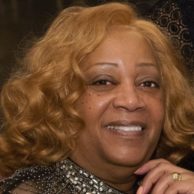
Savage, Deborah
Fearless Fighter
Savage,
Deborah

Savage, Deborah
Fearless Fighter
Deborah Savage arrived at Johns Hopkins in 1993 not knowing of the impact she would have on campus. Working on the Homewood campus, she performed a number of roles from serving as the IT manager for Student Technology Services to helping people with disabilities along with faculty, staff, and especially students, navigate the fast-moving digital landscape, including what was then known as the World Wide Web. Before long, Savage found herself seeking a way for the university’s custodial and food service workers to benefit from the same tech training that was being offered to other Hopkins employees. With the approval of university leaders, she was able to start a training program for the workers in the form of a weekend pilot program run by the BFSA. It is this work that Savage is most proud of. But it is the light she shined on employment disparities and general uneasiness among black faculty and staff at JHU that she holds dear to her heart.
In addition to her IT work, Savage served on a number of committees and working groups, including those to improve services for the disabled. She is also a past president of the Black Faculty and Staff Association where she led the group’s annual back-to-school clothing drive and Juneteenth celebration. As head of the BFSA, Savage hosted women’s luncheons, roundtable discussions and meetings with the university’s leadership.
It was Savage who brought to the attention of the leadership the lack of diversity on the walls of the university. The university, Savage argued, needed to do more to celebrate the contributions of people of color to Johns Hopkins. The leaders agreed, and with their blessing, a previous BFSA project known as the “History of African Americans at Johns Hopkins” was reborn as “The Indispensable Role of Blacks at Johns Hopkins.”
A three-term president of the BFSA, Savage was instrumental in securing annual meetings with the university’s presidents to discuss inequities in hiring and retaining African Americans. Those meetings continue to be held every year.
On many occasions, Savage’s work extended beyond the public to the private. It was not uncommon, she says, for faculty and senior staff, to confide in her their feelings of isolation as one of few people of color on campus. Ever patient, Savage would offer wise counsel telling her colleagues to stay strong and be patient. Sometimes she would say nothing. “We would just walk,” she said. She became the go-to person for black faculty and staff.
Savage, who retired last year after 23 years of service with JHU, looks back on her career at Hopkins with pride. She acknowledges that she sometimes feared the battles she took on, particularly those related to improving the climate for people of color at Hopkins. The institution, she said, was a difficult place to navigate as an African American. But she said, “You can surround yourself in support or you can suffer in silence.”
-

Savage, Vernon
Champion of Change—Black Faculty and Staff Association Founder
Savage,
Vernon

Savage, Vernon
Champion of Change—Black Faculty and Staff Association Founder
The Black Faculty and Staff Association (BFSA) came together, as so many advocacy groups do, over lunch and a conversation. Lunch was at the Polo Grill, then a restaurant across from Homewood Field, and the people who had gathered to talk were black senior staff members concerned about the lack of support for people of color at Johns Hopkins. Toni Moore-Duggan, one of the participants, recalled how that lunch and subsequent discussions among the staff members led to their decision in 1995 to establish the BFSA. “After graduating from Johns Hopkins and while working there, it became evident that there was no voice or forum for black people having difficulties here,” said Moore-Duggan, a certified nurse practitioner who worked at the institution for years.
At first, Moore-Duggan said, she and the other staff members were not sure if anyone would buy into efforts to create a forum for people of color, but they did. Seventeen years later, the group is not only going strong but has expanded its mission: to help foster a culture of collaboration by promoting and enhancing the identity and professional welfare and growth of faculty, staff and students through collaborations, community service, education, research and cultural activities. The BFSA has also charged itself with being a crucial resource for the continued success of Johns Hopkins through the development and cultivation of relationships with key leaders of the institution.
Vernon Savage, now retired, was the director of outreach for the JHU Counseling Center. He served two terms as president of the BFSA. During his first term, in 1998, Savage began the process of opening the organization to faculty and staff on the East Baltimore campus. Savage’s personal history is one of losing and then finding his direction. After graduating from Baltimore Polytechnic Institute, he worked at a variety of jobs and in the Marine Corps Reserve. During this time, he became involved in drug dealing and was imprisoned. With hard work, however, he turned his prison term into a time of growth: He began taking college classes, met a mentor who challenged him to succeed and earned an associate’s degree and a Ford Foundation scholarship for continued higher education. Out on parole, Savage earned master’s and doctoral degrees in clinical psychology and began a career in psychology and higher education administration that spanned more than three decades.
-
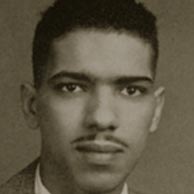
Scott, Frederick Isadore
Rebel with a cultural cause
Scott,
Frederick Isadore

Scott, Frederick Isadore
Rebel with a cultural cause
Growing up in Baltimore, Frederick Isadore Scott rarely encountered an idea he didn’t want to explore or an authority he was afraid to challenge. Born in 1927, he found that the city offered him limited opportunities but provided great support through its close-knit black community. As a student at Frederick Douglass High School, then one of the city’s two public high schools for black students, Scott asserted his ideas about justice by joining political groups, attending labor meetings and coordinating letter-writing campaigns to oppose segregation.
After he graduated from Douglass, his friends assured him that he couldn’t gain entry to the undergraduate program at Johns Hopkins. They dared him to try. He did and he got in. This was in 1945 and no other blacks had ever applied to the undergraduate program, according to the university registrar. The pressure to succeed and the change in culture were intimidating, but not intimidating enough to stifle Scott.
Beyond simply going to classes, Scott dared to change the campus culture by serving in the school’s Honor Commission and helping to found Beta Sigma Tau, the first interracial fraternity in Baltimore and the first to forbid any form of hazing. Although Scott’s education was interrupted by his stint in the Army during World War II, he returned to graduate from Johns Hopkins in 1950 with a degree in chemical engineering.
His career included several years as an engineer for RCA before serving as an editor for scientific and trade journals, including American Laboratory. Over the years, he remained close to the university, helping with recruitment and alumni issues. An alumni group formed to address racial tensions on the campus even adopted his name, calling itself the Frederick Scott Brigade.
Fred Scott died in 2017.
More about Fred Scott
Interview with John Morris as a part of the BFSA History of African Americans at JHU Project
-

Scott-Heron, Gil
Influential “bluesologist,” Voice of a generation
Scott-Heron,
Gil

Scott-Heron, Gil
Influential “bluesologist,” Voice of a generation
Gil Scott-Heron described himself as a blues scientist, a “bluesologist.” Others describe him as an influential poet, musician, recording artist, author and social critic.
He is renowned for his spoken word compositions in the 1970s and 1980s, and his best known works include “The Revolution Will Not Be Televised,” “Winter in America” and “Pieces of a Man.” Throughout his career, he and his collaborators took strong social and political stands, crafting works that fused jazz, blues, soul and other musical styles.
Scott-Heron earned a master’s degree in creative writing from Johns Hopkins University in 1972, though he had never completed an undergraduate degree. He passed away in May 2011.
-
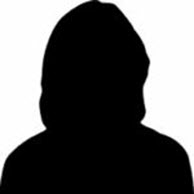
Sims, Lowery Stokes
Museum world boundary-pusher
Sims,
Lowery Stokes

Sims, Lowery Stokes
Museum world boundary-pusher
Lowery Stokes Sims, curator at the Museum of Arts and Design (formerly the American Craft Museum) in Manhattan, shares her expertise in modern and contemporary art with audiences at the museum and in other venues. Before joining the Museum of Arts and Design, Sims served as a staff member of The Metropolitan Museum of Art and then as executive director and president of The Studio Museum in Harlem.
With a particular interest in African, Latino, Native American, Asian American and women artists, Sims has curated more than 40 exhibits at The Metropolitan Museum of Art as well as at the National Gallery of Jamaica, The Cleveland Museum of Art, and the New York Historical Society. A popular lecturer, she has also edited exhibition catalogs and written for Artforum and Arts Magazine.
Sims earned her master’s degree in fine arts at Johns Hopkins University, and her career brings honor to the university’s arts programs.
-

Sise, Lamin J.
United Nations Powerhouse and Legal Stalwart
Sise,
Lamin J.

Sise, Lamin J.
United Nations Powerhouse and Legal Stalwart
Lamin J. Sise’s life and career can be summed up in six words – well-educated, well-traveled, and well-liked. Not bad for a young man who came to the United States seeking to earn an elite higher education that would put him on the path to professional success. And succeed he did. After earning undergraduate, graduate and doctorate degrees from the Johns Hopkins University in Baltimore and the School of Advanced International Studies (SAIS), Sise (pronounced See-Say) went on to earn his LL.B degree from the University of Cambridge in England.
A native of The Gambia in West Africa where he was educated at the primary and secondary levels, Sise attributes his academic and professional success directly to Johns Hopkins, a university that when he arrived there enrolled just a few students of color. Sise had transferred to the Homewood campus from Howard University in Washington, D.C. because he said he wanted a more challenging academic environment, as well as a 24-hour library that would allow him to delve deep into his political science and economics studies. He found that, and then some. While a student at Homewood, Sise was invited to dine at the Baltimore home of former JHU President Milton S. Eisenhower who was said to be so impressed with the student that he arranged to give Sise a generous financial aid package as long as Sise kept a strong GPA. Sise accepted with disbelief and relief. He had arrived in the U.S. with pennies in his pocket and worked three, sometimes four jobs, to pay his Howard, then JHU bills.
Upon completing his education, Sise set out to ensure that JHU’s financial gesture to him as an undergraduate student, was not in vain. To this day, he attributes his successful career to Johns Hopkins – a career in which he was employed by the United Nations for three decades in Geneva, Switzerland and New York. Here he worked in various legal capacities and as senior advisor to former UN Secretary-General Kofi Annan. From 1977 to 1983 Mr. Sise served as Deputy Legal Adviser of the United Nations Conference on Trade and Development in Geneva. From 1983 to 2007, he served in New York in the Office of Legal Affairs, Department of Peacekeeping Operations and in the Executive Office of the Secretary-General. Sise, who has worked in over 100 countries, said he owes his successful career entirely to Johns Hopkins. “Imagine me, a poor African boy who has met with dozens of heads of states and every president from Gerald Ford to Barack Obama,” Sise said. “I would not have been able to do these things in my career without Johns Hopkins.”
-
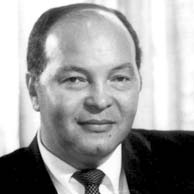
Smith Jr., Clifford V.
Pioneering engineer
Smith Jr.,
Clifford V.

Smith Jr., Clifford V.
Pioneering engineer
Clifford V. Smith, Jr. is no stranger to being a trailblazer. An engineer, and an academic, he was among the few African Americans to obtain a bachelor’s degree in civil engineering from the University of Iowa in 1954. He went on to be one of the first blacks to earn a master’s degree in environmental engineering in 1960, and a doctorate in radiological sciences in 1966, both from Johns Hopkins University.
A native of Washington, D.C., Smith recalls his days in segregated Baltimore as difficult, but fun. At Hopkins, he immersed himself in tough engineering and science classes and taught in the School of Public Health. Rarely, did he run into any other black students or professors at Hopkins, though he knew he was not alone.
Smith parlayed his education into a successful career as an engineer in academia, government and industry. In government, he served in high-level positions with the U.S. Nuclear Regulatory Commission and the U.S. Environmental Protection Agency. In industry, he worked for Bechtel, the engineering and construction firm. In academia, Smith held senior leadership positions within the Oregon State System of Higher Education, including vice president of administration at Oregon State University, special assistant to the chancellor of the State System for Science Technology and Economic Development, director of the Council for Advanced Science Engineering Education, and Research for Industry.
From 1986 to 1990, Smith was the chancellor of the University of Wisconsin-Milwaukee, the first African-American in the University of Wisconsin system to hold such a post. Before UW-Milwaukee, Smith held academic positions with the City College of New York, Tufts University, the University of Massachusetts Amherst, and the University of Connecticut. In 1990, he was appointed president of the General Electric Foundation, the philanthropic arm of GE. He retired from General Electric in 1997.
Smith credits his distinguished career, in part, to his decision to enroll in the engineering master’s program at Hopkins. He was a young man working in the Pennsylvania Department of Health in Philadelphia when he learned that his job would pay for a portion of his graduate school expenses. He did some research and found that the program he was interested in was only offered at Hopkins and Harvard. He chose Hopkins. The decision paid off. He selected Hopkins again for his Ph.D., attending classes and studying with two young children at home, and one on the way. His youngest daughter was born at Johns Hopkins Hospital in 1963.
Next to his father who was also an engineer and Iowa alum, Smith said he owes his ability to complete his doctorate in a field where there were not many blacks, to his wife of 61 years, Nina Marie Singleton who like him, was a native of Washington, D.C.